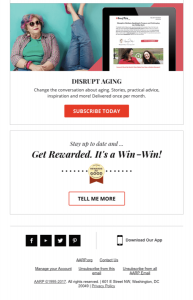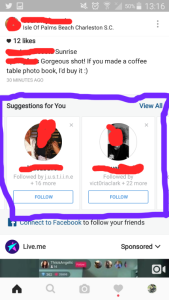An email campaign provides an immediate way to connect with your audience and generates one of the highest ROI.
During the dawn of social media, email campaigns were dismissed as being past it. However, this year experts have noted resurgence in email marketing and with buzzwords such as ‘hyper-personalisation’ and ‘marketing automation’ lingering in the air, this trend is not showing any sign of slowing down.
Email campaigns form a bond with your customer that can’t be replicated on a website. Yet it can be a long road to sustaining your readers with content that is relevant and useful.
There are more tools that are making the process easier, with ready-made templates and analytics data at hand. Despite this, there are many who are unsure on how to implement an email campaign, resulting in a campaign that falls flat.
Whether you want to increase leads, reach out to prospects or retain customers, here are six tips that will help you create an effective email campaign.
Start With ‘Why’
Before you go ahead with your newsletter, you need to consider whether you actually need one.
Think about whom you are writing for, why and how readers would benefit from subscribing.
Do you need to increase your leads, have a product to promote, an offer to share or do you wish to reconnect with existing clients?
Once you have nailed the details you can start thinking about how best to appeal to your audience and prospects.
What Sort of Campaign Do You Want to Send?
The purpose of an email campaign isn’t to support every aspect of your business. Work with your line manager to create a content calendar so that your email doesn’t end up a cluttered mess.
Topic: What will your email be about?
Content Types: Blog post promotions, press releases. Put on your editor hat and think about what will appeal to your audience
Method: How will you implement your campaign and how often?
Get Personal
Econsultancy asked marketing experts “What do you think the biggest change to email marketing will be in 2016”, with personalisation of emails named as a growing trend.
Studies also show personalised emails will gain 2.5 times higher click-through rate and generate 6 times more sales.
Don’t just tailor the name and subject line, think about what copy can be personalised based on insightful customer data such as birthdays and buying habits. Take a look at these examples of personalised email campaigns in action.
Minimise Copy
Keep it short, sweet and on message.
When opening your campaign, your readers are busy and probably already sifting through hundreds of emails. The most likely outcome is that they will scan for the main points and move on.
Write in short paragraphs and use compelling images to hook them in. Be creative with your subject lines and make those headlines snappy.
If you have a lot of information to share then add it as a blog and promote it on your newsletter with a ‘read more’ link.
Go Easy on the Sales Pitch
Don’t turn into that salesman who only wants to talk about the product.
Filling your email with sales copy and gimmicky catchphrases will turn your campaign into a wasted opportunity.
Keep Design Simple and Responsive
Email marketing is becoming central to mobile strategies, with reading emails the top activity on smartphones.
Design your email so that it is responsive and easy to read on mobile devices, boosting your chances of increased click-through rate and conversions. Provide a poor mobile experience and your email will be forgotten.
A minimalist look with plenty of white space will alleviate the feeling of clutter and help your reader navigate toward the clear call to action. Here are some examples of email campaigns that hit the mark as soon as they hit the inbox.
This blog post was originally published here.
Digital & Social Articles on Business 2 Community(29)
Report Post



